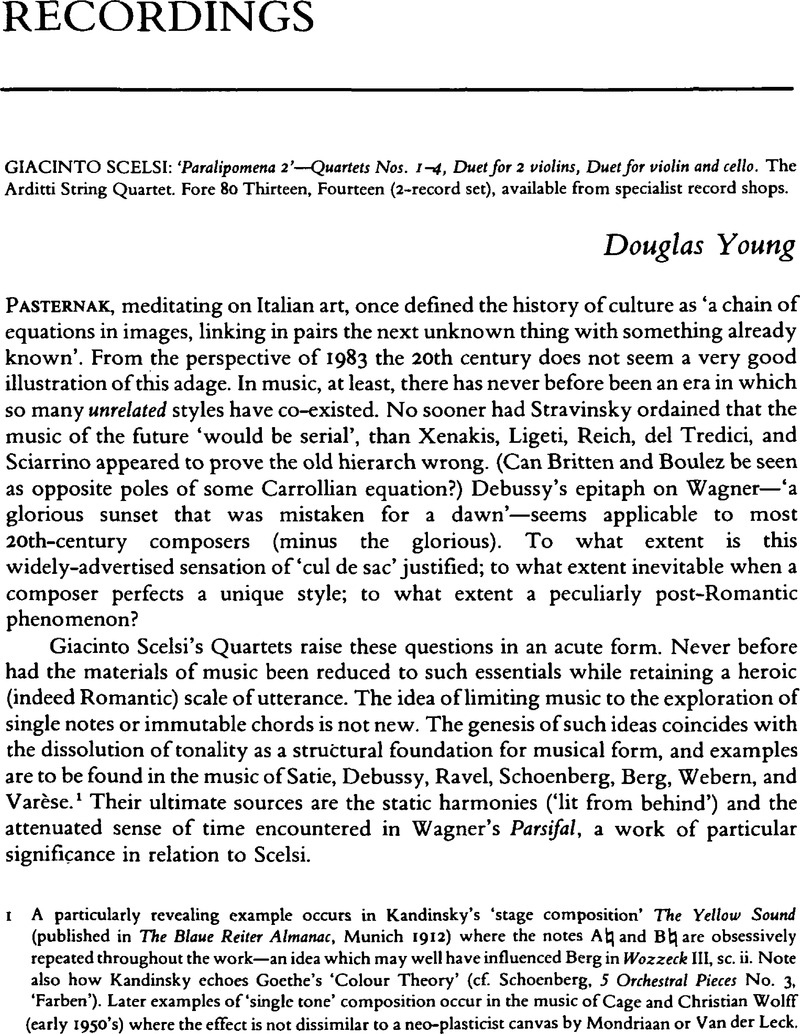No CrossRef data available.
Article contents
Recordings
Published online by Cambridge University Press: 04 February 2010
Abstract

- Type
- Recordings
- Information
- Copyright
- Copyright © Cambridge University Press 1983
References
1 A particularly revealing example occurs in Kandinsky's ‘stage composition’ The Yellow Sound (published in The Blaue Reiter Almanac, Munich 1912)Google Scholar where the notes A ♮ and B ♮) are obsessively repeated throughout the work—an idea which may well have influenced Berg in Wozzeck III, sc. ii. Note also how Kandinsky echoes Goethe's ‘Colour Theory’ (cf. Schoenberg, , 5 Orchestral Pieces No. 3, ‘Farben’)Google Scholar. Later examples of ‘single tone’ composition occur in the music of Cage and Christian Wolff (early 1950's) where the effect is not dissimilar to a neo-plasticist canvas by Mondriaan or Van der Leck.
2 The First Quartet (1944) stands apart. An eclectic work, it echoes the musical landscape of Schoenberg and Ives, and is a fine example of the ‘Sturm und Drang’ period of Scelsi's oeuvre. All the Quartets are played with great panache by the indefatigable Arditti Quartet, whose first appearance on disc this is.
3 Significantly, it was a composer of more traditional outlook who achieved an unprecedented richness and intensity of expression by extreme reduction of musical forces and language—Britten, in Curlew River (1964). Indeed I recall Britten actually using the phrase ‘less is always more’ in conversation in 1972.
4 Salvatore Sciarrino might seem the exception. His hauntingly evocative works Ai limiti della notte and All'aure in una lontananza explore some similar musical areas to Scelsi, but their aesthetic could not be at a further remove.


